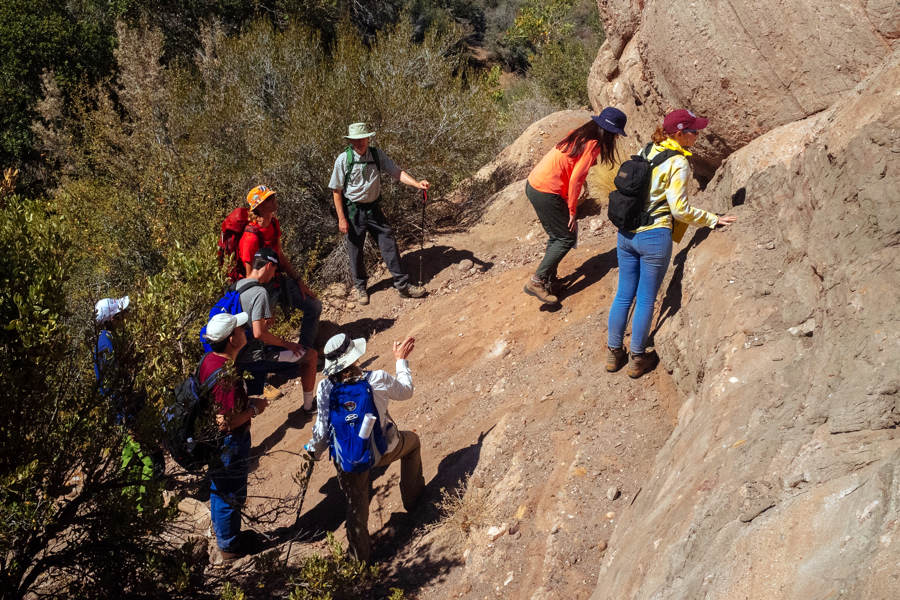All Categories
Featured
Table of Contents
Geophysical Exploration in West Leederville Australia 2023

The main model for the radial structure of the interior of the Earth is the initial referral Earth design (PREM). Some parts of this model have actually been updated by recent findings in mineral physics (see post-perovskite) and supplemented by seismic tomography. The mantle is mainly composed of silicates, and the boundaries between layers of the mantle are constant with phase shifts.

Schematic of Earth's magnetosphere. Circulations from left to.
Inside the magnetosphere, there are fairly dense regions of solar wind particles called the Van Allen radiation belts. Geophysical measurements are generally at a specific time and place.
Geophysical Survey Services in Nollamara Oz 2021
, combines astronomical coordinates and the regional gravity vector to get geodetic collaborates. This approach just provides the position in two collaborates and is more challenging to use than GPS.
Gravity measurements ended up being part of geodesy because they were required to associated measurements at the surface of the Earth to the referral coordinate system.
Sea level can also be determined by satellites utilizing radar altimetry, contributing to a more accurate geoid. In 2002, NASA launched the Gravity Recovery and Climate Experiment (GRACE), in which two twin satellites map variations in Earth's gravity field by making measurements of the distance between the two satellites utilizing GPS and a microwave ranging system. , which are studied through geophysics and area physics.
How A Geophysical Survey Is Crucial To Offshore Wind Farm ... in Mariginup Australia 2022

Considering that geophysics is worried with the shape of the Earth, and by extension the mapping of features around and in the planet, geophysical measurements consist of high precision GPS measurements. These measurements are processed to increase their precision through differential GPS processing. Once the geophysical measurements have actually been processed and inverted, the translated results are outlined utilizing GIS.
Numerous geophysics business have developed internal geophysics programs that pre-date Arc, GIS and Geo, Soft in order to meet the visualization requirements of a geophysical dataset. Exploration geophysics is applied geophysics that typically uses remote noticing platforms such as; satellites, aircraft, ships, boats, rovers, drones, borehole sensing equipment, and seismic receivers.
Aeromagnetic information (airplane collected magnetic data) collected utilizing conventional fixed-wing aircraft platforms should be fixed for electromagnetic eddy currents that are created as the airplane moves through Earth's electromagnetic field. There are likewise corrections connected to modifications in measured prospective field intensity as the Earth rotates, as the Earth orbits the Sun, and as the moon orbits the Earth.
Standard And Guidance For Archaeological Geophysical ... in Mount Nasura WA 2020
Signal processing includes the correction of time-series information for undesirable sound or mistakes introduced by the measurement platform, such as airplane vibrations in gravity data. It likewise involves the decrease of sources of noise, such as diurnal corrections in magnetic information. In seismic information, electro-magnetic information, and gravity data, processing continues after mistake corrections to consist of computational geophysics which result in the final interpretation of the geophysical data into a geological analysis of the geophysical measurements Geophysics emerged as a separate discipline just in the 19th century, from the intersection of physical geography, geology, astronomy, meteorology, and physics.
The magnetic compass existed in China back as far as the 4th century BC. It was utilized as much for feng shui as for navigation on land. It was not up until great steel needles might be created that compasses were used for navigation at sea; before that, they might not maintain their magnetism long enough to be helpful.
By looking at which of eight toads had the ball, one might determine the instructions of the earthquake. It was 1571 years prior to the very first design for a seismoscope was released in Europe, by Jean de la Hautefeuille. It was never ever developed. One of the publications that marked the start of modern-day science was William Gilbert's (1600 ), a report of a series of meticulous experiments in magnetism.
Geophysical Survey - Mining Fundamentals in Riverton Western Australia 2023
Dietmar; Sdrolias, Maria; Gaina, Carmen; Roest, Walter R. (April 2008). "Age, spreading out rates, and spreading asymmetry of the world's ocean crust". Geochemistry, Geophysics, Geosystems. 9 (4 ): Q04006. Bibcode:2008 GGG ... 9. 4006M. doi:10. 1029/2007GC001743. S2CID 15960331. "Earth's Inconstant Electromagnetic field". science@nasa. National Aeronautics and Space Administration. 29 December 2003. Retrieved 13 November 2018.
Leipzig. Berlin (Gebruder Borntraeger). Runcorn, S.K, (editor-in-chief), 1967, International dictionary of geophysics:. Pergamon, Oxford, 2 volumes, 1,728 pp., 730 fig Geophysics, 1970, Encyclopaedia Britannica, Vol. 10, p. 202-202 Ross 1995, pp. 236242 Shearer, Peter M. (2009 ). Intro to seismology (2nd ed.). Cambridge: Cambridge University Press. ISBN 9780521708425. Stphane, Sainson (2017 ).
Table of Contents
Latest Posts
How To Become A Geophysicist in Mount Claremont Oz 2023
Geophysical Survey Next Step In Carbon Storage Study in Brookdale Western Australia 2023
Geophysical Investigations in Calista Western Australia 2022
More
Latest Posts
How To Become A Geophysicist in Mount Claremont Oz 2023
Geophysical Survey Next Step In Carbon Storage Study in Brookdale Western Australia 2023
Geophysical Investigations in Calista Western Australia 2022